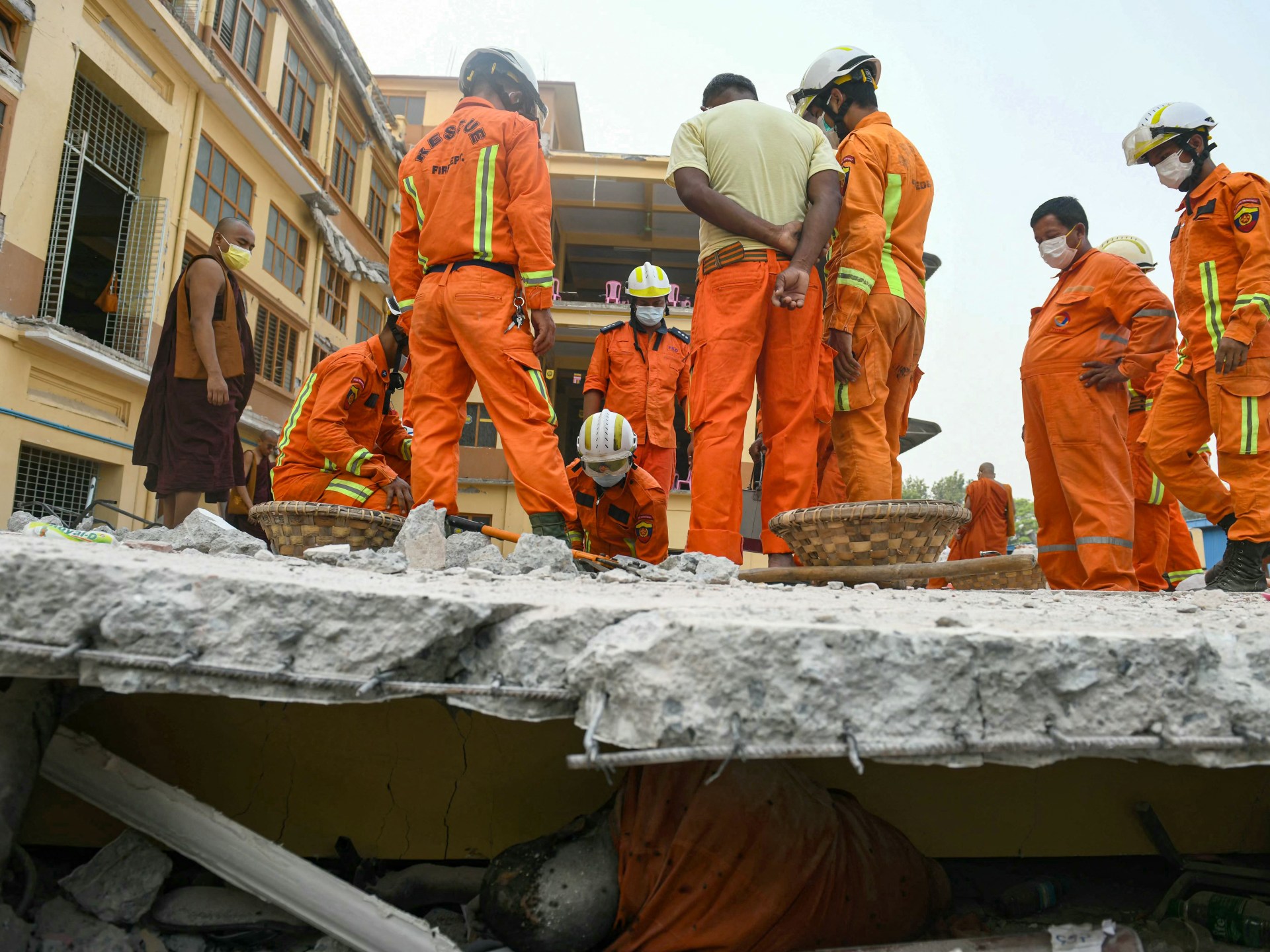The smell of decaying bodies permeates the streets of Myanmar’s second-largest city as volunteers work frantically by hand to clear rubble in the hope of finding people still alive, two days after a massive earthquake killed more than 1,600 people and left countless others buried.
The magnitude 7.7 quake hit midday on Friday with an epicentre near Mandalay, bringing down scores of buildings and damaging other infrastructure like the city’s airport.
Relief efforts have been hampered by buckled roads, downed bridges, unreliable communications and the challenges of operating in a country amid a civil war.
The search for survivors has been primarily conducted by locals without the aid of heavy equipment, moving rubble by hand and with shovels in 41C (106F) heat, with only the occasional tracked excavator to be seen.
Many of Mandalay’s 1.5 million people spent the night sleeping on the streets, either left homeless by the quake, which also shook neighbouring Thailand and killed at least 17 people there, or worried that the continuing aftershocks might cause structures left unstable to collapse.
So far, 1,644 people have been reported killed in Myanmar and 3,408 missing, but many areas have not yet been reached, and many rescue efforts so far have been undertaken by people working by hand to try to clear rubble, said Cara Bragg, the Yangon-based manager of Catholic Relief Services, an international humanitarian agency, in Myanmar.
The quake rocked much of neighbouring Thailand, bringing down a high-rise building under construction in Bangkok, some 1,300km (800 miles) away from the epicentre.
So far, 10 people have been found dead at the construction site near the popular Chatuchak Market, where 83 people are unaccounted for and the latest body was recovered from the rubble early on Sunday morning. A total of 17 people have been reported killed by the quake in Thailand so far.
